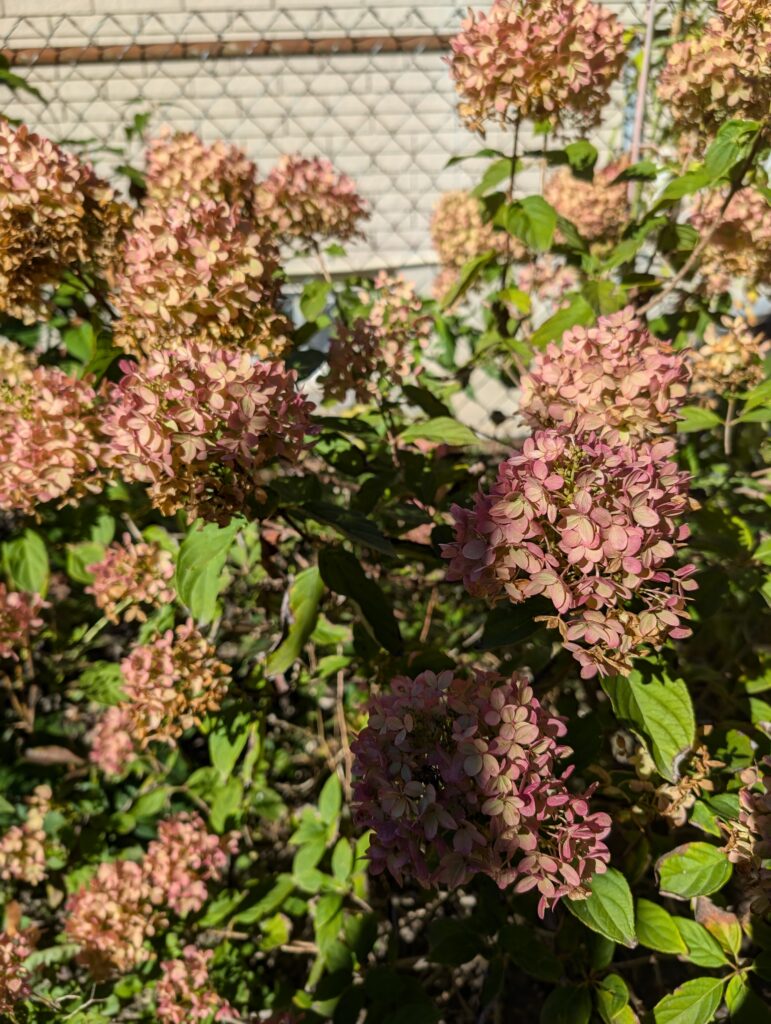Ask A Master Gardener – ‘Gardening for Winter Interest’
November 2024 Puslinch Pioneer
By Heather Rajotte, Guelph-Wellington Master Gardener
Photo: Hydrangea paniculata ‘Little Lime’ (by H. Rajotte)

Q: Winter is so dreary – how can I make my garden more interesting?
A: Other than looking at seed catalogues and dreaming of spring, there are plenty of ways of
gardening for winter interest to keep your green thumbs happy until the warmer weather returns.
Planting species with long lasting flowers or leaves that remain on the plant is a good place to
start. Any species of Hydrangea paniculata is a good example of this. The flower heads dry
beautifully when left on the shrub and provide a pretty landing spot for birds and light snow. You
may even see a chickadee pluck some blossoms for nesting material!
Oak trees (Quercus spp.) are notorious for hanging on to their leaves throughout the winter and
they make a lovely sound in the winter winds. Echinacea seed heads are a great food source for
birds all winter long and anything remaining can be cut back in the springtime.
There are plenty of species with interesting bark that provide colour and texture to your winter
gardens. Several species of dogwood and willow have barks in brilliant shades of red, orange
and yellow that really stand out against the snow. If you have room for a larger tree, consider
Paperbark Maple (Acer griseum) or London Plane Tree (Platanus X acerifolia), both of which
have a stunning exfoliating bark.
You may also consider leaving spent perennials intact to provide structural interest in your
garden. Ornamental grasses hold their shape quite well and can also be decorated for the
holidays. The sturdy stems of perennial Hibiscus provide a nice perch for birds and can be
strung with ornaments or small bird feed decorations. Leaving perennials is also a great practice
for ecologically-beneficial gardening – they provide vital shelter for overwintering insects and
begin to return nutrients to the soil in the spring.
Of course, no winter garden would be complete without some evergreen species. For added
interest, try a species that produces winter berries for added wildlife activity in your garden.
Most Juniper species will produce berries from fall through Christmas when mature. Iconic holly
berries are vibrant and long lasting – just make sure to get a male and female plant! There are
even some herbaceous perennials that are semi-evergreen, such as Heuchera Coral Bells. If
planted in a protected area, these low-growing plants will provide a pop of colour through the
snow.
Finally, there are some fantastic early-flowering plants you can try that will give colour as early
as February or March – weather and temperature dependent. Hellebores, Witch Hazel, Winter
Aconite and Fragrant Viburnum are all hardy, late-winter flowering plants that will bring a burst of
spring cheer before the snow melts.
